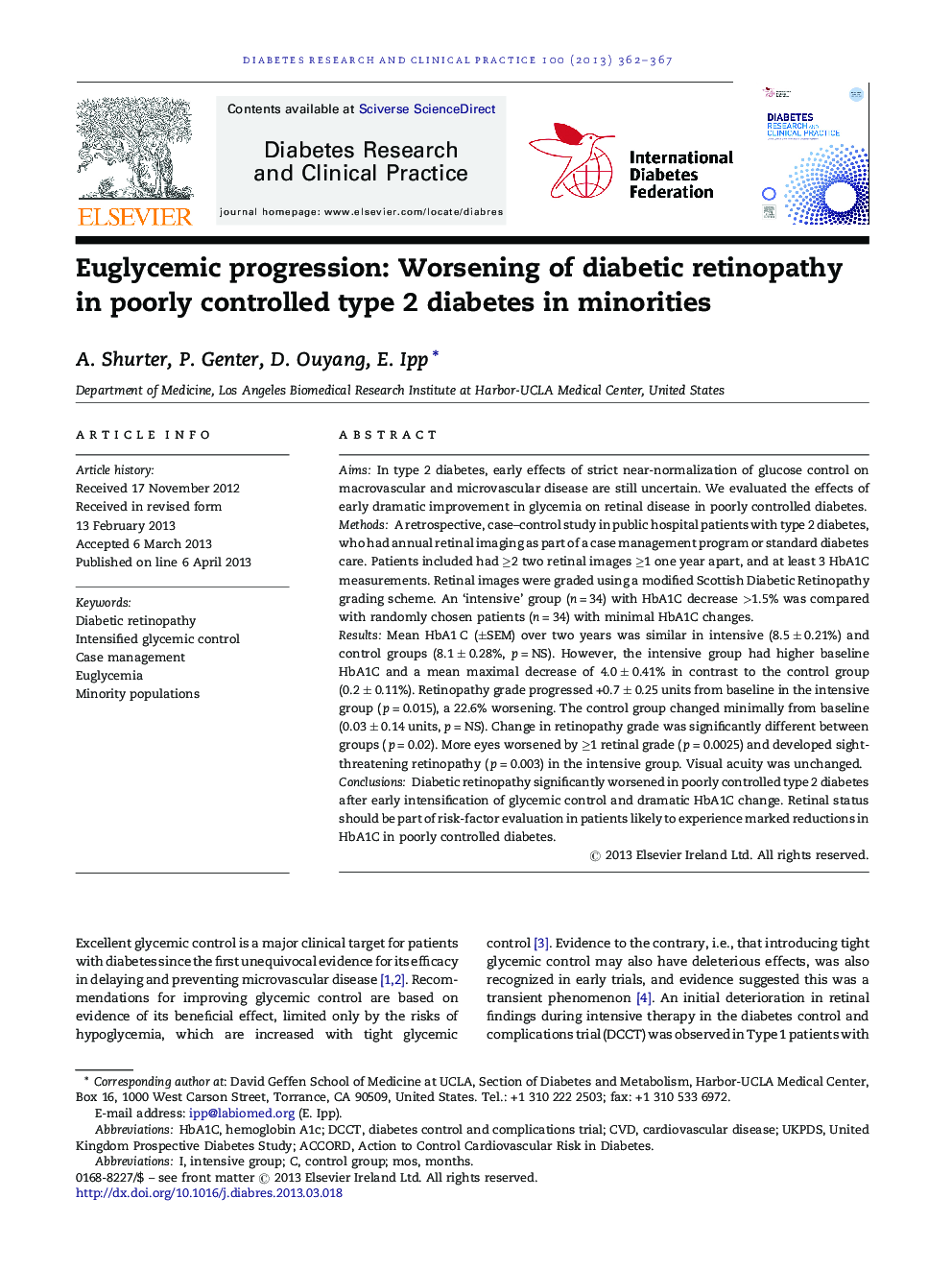| Article ID | Journal | Published Year | Pages | File Type |
|---|---|---|---|---|
| 2796755 | Diabetes Research and Clinical Practice | 2013 | 6 Pages |
AimsIn type 2 diabetes, early effects of strict near-normalization of glucose control on macrovascular and microvascular disease are still uncertain. We evaluated the effects of early dramatic improvement in glycemia on retinal disease in poorly controlled diabetes.MethodsA retrospective, case–control study in public hospital patients with type 2 diabetes, who had annual retinal imaging as part of a case management program or standard diabetes care. Patients included had ≥2 two retinal images ≥1 one year apart, and at least 3 HbA1C measurements. Retinal images were graded using a modified Scottish Diabetic Retinopathy grading scheme. An ‘intensive’ group (n = 34) with HbA1C decrease >1.5% was compared with randomly chosen patients (n = 34) with minimal HbA1C changes.ResultsMean HbA1 C (±SEM) over two years was similar in intensive (8.5 ± 0.21%) and control groups (8.1 ± 0.28%, p = NS). However, the intensive group had higher baseline HbA1C and a mean maximal decrease of 4.0 ± 0.41% in contrast to the control group (0.2 ± 0.11%). Retinopathy grade progressed +0.7 ± 0.25 units from baseline in the intensive group (p = 0.015), a 22.6% worsening. The control group changed minimally from baseline (0.03 ± 0.14 units, p = NS). Change in retinopathy grade was significantly different between groups (p = 0.02). More eyes worsened by ≥1 retinal grade (p = 0.0025) and developed sight-threatening retinopathy (p = 0.003) in the intensive group. Visual acuity was unchanged.ConclusionsDiabetic retinopathy significantly worsened in poorly controlled type 2 diabetes after early intensification of glycemic control and dramatic HbA1C change. Retinal status should be part of risk-factor evaluation in patients likely to experience marked reductions in HbA1C in poorly controlled diabetes.
